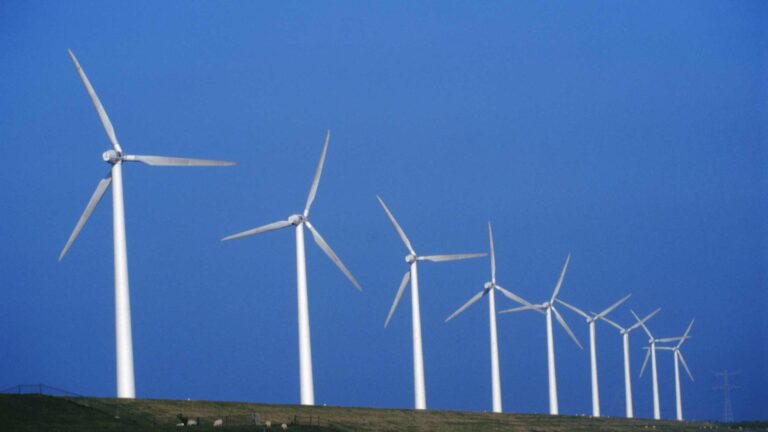
The Need for Renewable Energy in Pakistan
by
Rida Maheen
It is known that emissions, such as Carbon dioxide (CO2), Nitrogen oxides (NOx) etc., from the combustion of fossils contribute to smog and respiratory illnesses. Air pollution is one of the world’s leading risk factors for death, attributed to 5 million deaths each year (9% of deaths globally) 1. Renewable energy, on the other hand, cuts air pollution, making people less vulnerable to diseases. It can help prevent greenhouse gas emissions and protect communities from harmful effects of climate change. For more than two-thirds of the world, renewable energy is one of the economic sources of new power generation and has no fuel costs2. It can reduce the economic burden of energy bills by removing fuel charges — particularly when coupled with energy-efficiency upgrades in our homes and businesses.
Renewable energy can prevent greenhouse gas emissions and protect communities from harmful effects of climate change
Governments around the globe are expected to submit their Intended Nationally Determined Contributions (INDCs) as part of the international climate policy regime in order to achieve GHG stabilization in the region. The INDCs, therefore, effectively indicate the commitment of a nation to achieving the universal goal set out in the Paris Agreement and the corresponding country-level compliance mechanism. Pakistan has responded positively, along with other nations, to tackle climate change by ratifying the Paris Agreement in 2016 and submitting its INDCs.
Pakistan has responded positively, along with other nations, to tackle climate change by ratifying the Paris Agreement in 2016 and submitting its INDCs.
Pakistan’s vulnerability to adverse impacts of climate change is widely recognized. Despite Pakistan’s miniscule contribution to global GHG emissions, and although we have seen a drop of rank on the list, it is still among the top ten most climate-affected countries (now ranked number 8th) of the world, as indicated by the Global Climate Risk Index 3.
Rooted in the country’s strategic plan ‘Vision 2025’, Pakistan’s INDC statement — “Pakistan intends to reduce up to 20% of its 2030 projected GHG emissions subject to availability of international grants to meet the total abatement cost for the indicated 20 percent reduction” — is consistent with its National Climate Change Policy that sets down related policies, plans and development in the sectoral targets set by different ministries and other agencies of the government.
The World Bank suggests that utilizing just 0.071% of the country’s area for solar photovoltaic (solar PV) power generation would meet Pakistan’s current electricity demand.
Simultaneously, the World Bank5 suggests that utilizing just 0.071% of the country’s area for solar photovoltaic (solar PV) power generation would meet Pakistan’s current electricity demand. Moreover, Pakistan also has several well-known wind corridors and average wind speeds of 7.87m/s in 10% of its windiest areas. The Variable Renewable Energy Integration and Planning Study6 by the World Bank suggests that solar and wind power should be urgently expanded to at least 30% of Pakistan’s total electricity capacity by 2030, which is equivalent to 24,000 Megawatts. The study also proposes that renewable energy expansion will make power affordable, improve energy stability, reduce carbon emissions, and save up to $5 billion for Pakistan over the next 20 years.
Conclusion
Although, a lot more room remains for renewable energy growth, the ongoing policy reforms, regulatory changes, creation of infrastructure and investment incentives are aimed at ensuring a safe, cheap and continuous transition to clean energy.
References
- Air Pollution – Our World in Data. Accessed February 21, 2021. https://ourworldindata.org/air-pollution
- Scale-up of Solar and Wind Puts Existing Coal, Gas at Risk | BloombergNEF. Accessed February 21, 2021. https://about.bnef.com/blog/scale-up-of-solar-and-wind-puts-existing-coal-gas-at-risk/
- Global Climate Risk Index 2021 | Germanwatch e.V. Accessed February 21, 2021. https://germanwatch.org/en/19777
- Renewables Readiness Assessment: Pakistan. /publications/2018/Apr/Renewables-Readiness-Assessment-Pakistan. Accessed February 21, 2021. /publications/2018/Apr/Renewables-Readiness-Assessment-Pakistan
- Expanding Renewable Energy in Pakistan’s Electricity Mix. Accessed February 21, 2021. https://www.worldbank.org/en/news/feature/2020/11/09/a-renewable-energy-future-for-pakistans-power-system
- Pakistan Sustainable Energy Series Variable Renewable Energy Integration and Planning Study Variable Renewable Energy Integration and Planning Study.; 2020. Accessed February 21, 2021. https://worldbank.org


Recent Comments